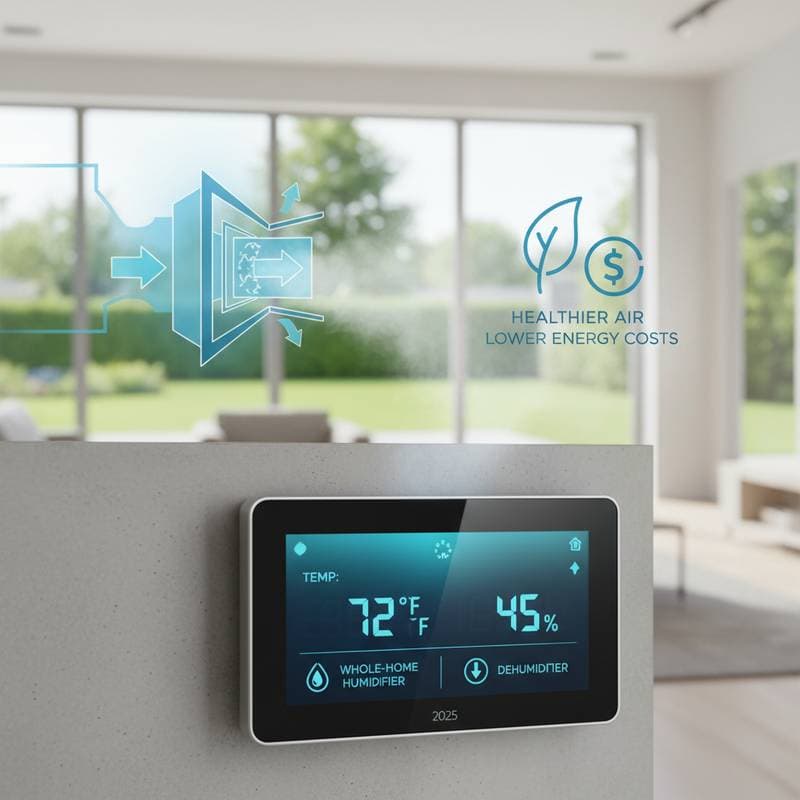The Evolution of Ductless HVAC in Modern Construction
In my experience as an HVAC professional, I have observed homeowners transition from the inconsistencies of central air to the reliable performance of ductless systems. Envision entering a new home where each room maintains ideal temperature without visible ducts or drafts. Builders adopt ductless HVAC as a fundamental advancement in residential design, prioritizing efficiency and adaptability.
This movement away from conventional ductwork represents a significant change in how homes are constructed today. Whether constructing a new residence, renovating an existing one, or updating an aging system, grasping the rationale behind this choice empowers informed decisions for optimal comfort.
Key Benefits of Ductless Systems
1. Superior Energy Efficiency
Ductless systems frequently surpass the performance of traditional HVAC configurations. Their Seasonal Energy Efficiency Ratio (SEER) ratings can exceed 25, allowing them to achieve comparable cooling with reduced electricity consumption. Homeowners often realize utility bill reductions of 20 to 40 percent.
I advise selecting ductless options for properties where conserving energy ranks high. These systems adjust rapidly to individual room needs, avoiding the waste associated with conditioning unoccupied areas.
2. Streamlined Installation Process
Traditional duct installation demands substantial effort, including routing through walls and ceilings while ensuring airtight seals to avoid energy loss. Ductless setups eliminate these complexities entirely.
Installation typically involves a modest wall penetration to link indoor and outdoor components. This approach shortens project timelines for builders and eliminates requirements for bulkheads or lowered ceilings. During renovations, it minimizes interference with current structures and surfaces.
3. Precise Zoned Temperature Management
Consider a household where each occupant customizes their space's climate independently. Ductless technology enables this level of personalization.
Independent indoor units allow targeted control over distinct areas. Such zoning proves essential in multi-level dwellings or expansions where uniform temperatures challenge conventional systems. One builder collaborator noted, "Zoned comfort sells homes faster than granite countertops."
4. Enhanced Indoor Air Quality
Conventional ducts often harbor dust, allergens, pet hair, and mold, which then distribute through the living spaces if not meticulously maintained. Ductless units incorporate filtration directly at each indoor head.
These accessible filters simplify cleaning and elevate overall air purity. This capability attracts those prioritizing health, particularly individuals sensitive to respiratory irritants or seeking a healthier home atmosphere.
5. Minimal Noise Levels
The sudden activation of a central HVAC unit can interrupt tranquility. Ductless models function with exceptional quietness, emitting only a soft whisper from indoor components.
Outdoor units feature noise-dampening designs for discreet operation. This attribute suits serene environments like sleeping quarters, home offices, or expansive living zones.
Practical Guidance for Ductless System Implementation
1. Evaluate Layout and Coverage Needs
Start by analyzing the property's dimensions and configuration. Individual indoor units generally serve 300 to 600 square feet per zone.
Open floor plans may require fewer units for comprehensive coverage. In divided spaces, additional zones ensure balanced conditioning throughout.
2. Determine Appropriate System Capacity
Accurate sizing prevents performance issues. Units that are too small overwork themselves, while oversized ones cycle inefficiently and degrade faster.
Engage a certified HVAC specialist to conduct a Manual J load calculation, factoring in insulation quality, window dimensions, and expected usage. I emphasize that professional assessment guarantees sustained efficiency and comfort.
3. Integrate Design and Positioning
Visible indoor units demand thoughtful placement to complement interiors. Professionals frequently position them at wall tops or embed them in ceilings for seamless integration.
Locate outdoor units in protected, shaded spots to optimize functionality and ease servicing.
4. Establish a Maintenance Routine
Ductless systems demand less frequent intervention than ducted alternatives, yet consistent care preserves their advantages.
- Inspect and clean filters monthly or bimonthly.
- Arrange biannual professional inspections.
- Clear debris around the outdoor unit regularly.
These practices prolong operational life and uphold peak performance.
Compliance and Safety Essentials
All HVAC projects must adhere to local regulations and equipment specifications. Permits are standard for new installations in most areas.
Partner with a licensed contractor to handle wiring, condensate drainage, and refrigerant protocols correctly. Avoid self-installation, as it involves certified expertise for safe refrigerant charging and system testing.
A seasoned technician remarked, "The system’s efficiency starts with the precision of its setup."
Confirm your provider holds proper insurance, certifications, and knowledge of regional efficiency codes.
Common Questions About Ductless HVAC
Q: How long does installation typically require?
A: Single-zone setups often complete in one day, while multi-zone installations span one to two days. Extensive configurations extend slightly beyond, yet remain quicker than full ductwork projects.
Q: Can ductless systems function in cold weather?
A: Absolutely. Contemporary ductless heat pumps maintain efficiency in subfreezing conditions, often eliminating the need for auxiliary heating.
Q: What is the recommended filter maintenance schedule?
A: Perform cleaning every one to two months, adjusted for household activity and local air conditions. Overlooking this can diminish efficiency by as much as 25 percent.
Q: What durability can homeowners expect?
A: Proper maintenance yields 15 to 20 years of service. Routine professional care maximizes this duration.
Q: Does a ductless system enhance property value?
A: Indeed. Prospective buyers prioritize energy-saving, hassle-free HVAC features in today's market.
Realize Lasting Comfort with Ductless Innovation
Transitioning to ductless mini-splits equips homeowners with tailored, efficient climate control that aligns with sustainable living. Builders lead this change by integrating systems that reduce operational costs and environmental impact. Consult a trusted HVAC expert to explore how this technology can transform your space into a haven of consistent, healthful comfort.



